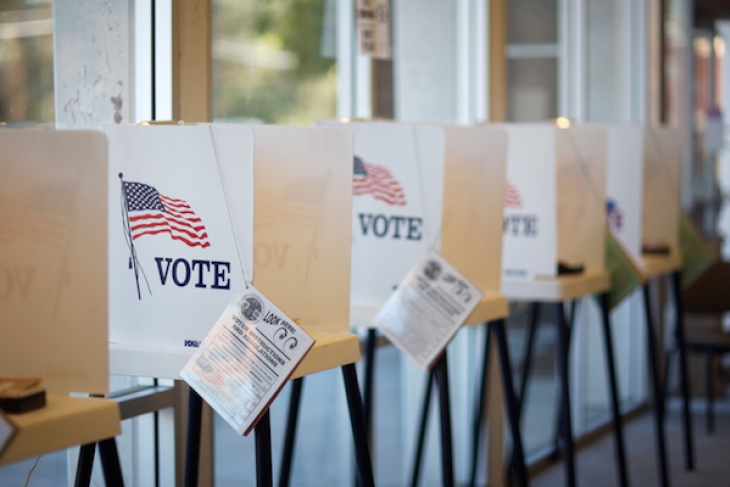There’s been a lot of talk about “blue waves” and “red walls,” but what will November 6 mean for federal and state education policies? Days away from the crescendo, the answer may depend in part on where you get your news. Some argue that education will be a top-tier issue; others are decidedly less sanguine. The media hype and enthusiasm at the national level belies its importance in some states more than others.
In no small measure, the upcoming midterms will be a referendum on the current administration; uniquely so given the president’s willingness to flaunt previously held conventions. Education’s place has been largely limited to the usual suspects (e.g., Arizona, Oklahoma) as key players in red-state teacher unrest. This has led to a record number of teachers running for state office in those states, but based on the campaign mailers I’ve received here in my home state of Colorado, office seekers don't believe education will drive voters to the polls.
My locally elected representatives have killed trees and spilled ink to highlight their local roots and attention to other bread-and-butter issues like taxes and health care. I’ve also seen one-sentence slogans about restoring civility to government, though nothing approaching the importance of civics education or ensuring the citizenry possess rudimentary knowledge of U.S. history. But there are three areas where the outcome of the election could have a big impact on education, and they aren’t what (or how) you might expect.
State and local funding-related ballot questions are the first place to look. In some states, the political winds have brought an increased appetite for more spending on education. Here in Colorado, there is a tax-based constitutional amendment on the ballot that—if approved—would carry significant implications for state education funding. It’s the largest of fifteen funding-related ballot measures that could allot at least $2.6 billion to education in eleven different states. In addition, two of Colorado’s largest districts are asking for nearly $900 million for teacher pay raises, capital improvements, and technology upgrades. While both measures face an uphill battle, local educators should quickly notice the difference if they’re passed.
Second, there are a few policy-related ballot measures that will be worth watching. Notably among them is a contentious and confounding veto referendum in Arizona that aims to expand eligibility for education savings accounts (ESA). Proponents often refer to ESAs as the “purest form” of school choice. In South Carolina, voters there will decide if the state superintendent becomes an appointed position rather than an elected one. The Palmetto State is one of a dwindling number of states that still elects its state chief, but whether they’re elected or appointed, these offices feel less consequential than they did a decade ago.
That’s because state education agencies and their overseers have historically been administrative entities that act as pass-throughs for federal dollars. It was only with the elevation of the role under former U.S. Secretary of Education Arne Duncan—by his using the bully pulpit to encourage state chiefs to be bold—that we began to view these folks as change agents. The current administration’s laissez-faire approach, coupled with a host of other issues, has in my estimation largely returned these positions back to where they once were.
As a result, I’ve been more interested in the thirty-six gubernatorial races, which is the third and final area that promises to have an outsized effect on education. At first glance, the forces of resistance and repeal look to have the upper hand. For example, both candidates in New Mexico appear ready to do a complete one-eighty on the state’s nationally recognized teacher evaluation system. In Wisconsin, birthplace of the nation’s first voucher program, the state superintendent—who is leading in most polls—has promised to roll back the state’s varied school choice offerings. Here in Colorado, the airwaves have been blanketed by ads that focus more on fearmongering and deception rather than substantive education issues.
But these contests carry broad implications for the implementation of state ESSA plans, which for better or for worse are the education roadmaps for states for the foreseeable future. These are the routes states plan on taking to support struggling schools. I recently examined state school improvement plans as part of an independent peer review. Later this month, a final report will share our findings and hopefully provide this new crop of governors—as well as other key stakeholders—useful insights and recommendations to consider as they invariably place their own mark on education policy.
Taken together, education may be flying under-the-radar in this year’s election cycle, but there are a few areas of nontrivial significance. With so many ballot initiatives related to education funding, there could be additional dollars available for a variety of outlays, including teacher pay raises. Policy changes could be on the horizon, both on the ballot and at the hands of a new cohort of state executives. But without some serious work—requiring serious leadership—any progress could be short lived. No one is looking to Washington anymore when it comes to education policy, but it remains to be seen which states will take the lead. What’s for certain is that there will be a lot of new faces influencing our issue come January.

